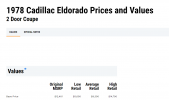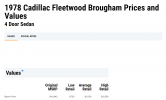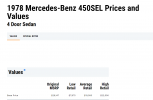-
Jensen ) ITTL the company would feature some elements of OTL Bristol with the ATL Jensen Interceptor featuring Chrysler LA V8 (and ATL mid/late-1960s LA V6) engines featuring Rotomaster Turbochargers and early Throttle Body Fuel Injection (TBI) System as well as LPG conversions. The 360 V8 Turbo putting out around 330-350 hp with the 239 (later 270) V6 Turbo putting out around 250-265+ hp (or roughly equivalent to the OTL 3.8 Buick V6 turbo and 4.3 GM 90-degree V6 turbo units IOTL).
The ATL
Jensen-Healey and Jensen-Healey GT (alternate Jensen GT that appeared at the same time) received better styling via William Towns original smoother-looking rejected proposal (without it being ruined by Kjell Qvale like IOTL). Engine options that were further evaluated during development ranged from 130-150 hp 2.0-2.3 16-valve DOHC fuel-injected ATL
Vauxhall Slant-Four, ATL (reliable) 144+ hp 2.0 Lotus 907, 155-190 hp 3.5 Rover V8 and a 131-180+ hp 2.0-2.2
Chrysler/Simca Type 180 with a Ricardo or Matra sourced 16-valve Twin-Cam head.
Ultimately Jensen's closer ties with Chrysler ITTL would lead the company to opt for the 2.0-2.2 Chrysler/Simca Type 180 engine along with the (possibly US specific) ATL Chrysler LA V6, the latter in naturally aspirated form put out up to 175-185+ hp and slotted above Chrysler/Simca Type 180 4-cylinder yet below the turbocharged LA V6. The LA V8 as well as the LA V6 / V8 LPG conversions would help broaden the appeal of the Interceptor a bit more as well as the Jensen-Healey / Jensen GT models the engines were fitted to ITTL.
The success of both the ATL Jensen Healey and Jensen Interceptor would lead to Jensen itself eventually being acquired by Chrysler, who approved the ATL Jensen G-Type and Jensen F-Type projects leaving the Healeys to move on to another venture.
-
Healey ) Under BMC ITTL an early-1960s version of the Austin-Healey 4000 (ADO24) would reach production, with the Healeys being much happier with the final result of the Austin-Healey 3000 MkIV (ADO51) project - now reconceived as
The Mid Healey (as opposed to a Big Healey successor) and featuring differentiated styling from the ATL MGC (which like the ATL MGB featured either rear coil springs with properly-designed Frontline-style Panhard Rod, rear coil spring with Watts Linkage or existing MGB/MGC suspension with telescopic front dampers and parabolic rear springs).
The ATL Austin-Healey 3000 MkIV (ADO51) would carry over the styling from Pio Manzu’s 1962 Austin-Healey 3000 Firrere Pininfarina concept (that formed the basis of ADO30) with a Coune MGB Berlinette front-end and the egg-box front-grille from the Costello MGB/MGC V8 by Ken Costello. Power would come from an ATL 3-litre B-Series 6-cylinder engine (much lighter than OTL C-Series) that depending on specification would put out 160-173+ hp (up to about 200 hp).
Events at BMC in the aftermath of the company acquiring Rover and feature products in the pipeline without any involvement or interest from the Healeys such as the ATL MG EX234 (that was to replace the Austin-Healey Sprite / MG Midget along with the MGB) and Rover P9, led Donald Healey to see the writing on the wall and secretly initiate the Healey X500 project before he was cut loose from his lucrative association with Austin by 1970 (albeit under more amicable circumstances compared to OTL).
History ITTL would be the same as the Jensen section above for the ATL Jensen-Healey up to Chrysler taking over Jensen during the mid/late-1970s, leading to the Healeys to return to the orbit of ATL BMC aka Austin Rover as a low-volume sportscar maker under the Healey Motor Company in a new final venture from the early-1980s.
Essentially the Healey Motor Company ITTL would acquire the rights to and produce initially restored later official low volume
resto-mod versions of the Sprite (ATL
Healey Frogeye) and Big Healey (ATL
HMC MkiV -
also here) as well as the ATL ADO51 (think ATL ADO51/ADO52 analogue of the Aston Martin MGB prototype though with the rights/tooling instead going to Healey), with engines sourced from ATL BMC aka Austin Rover who would go on to acquire the company not long after the death of
Geoffrey Healey in 1994.


